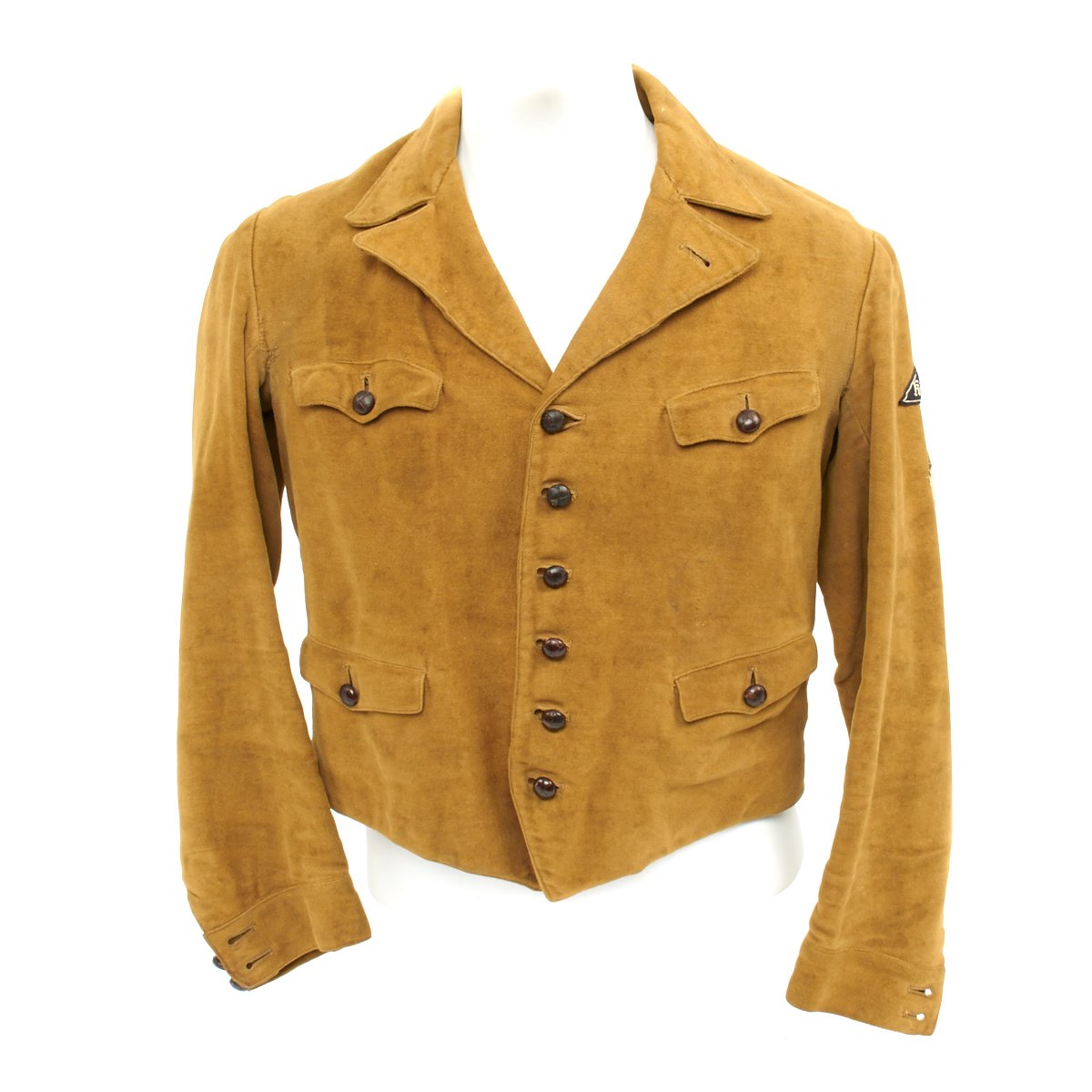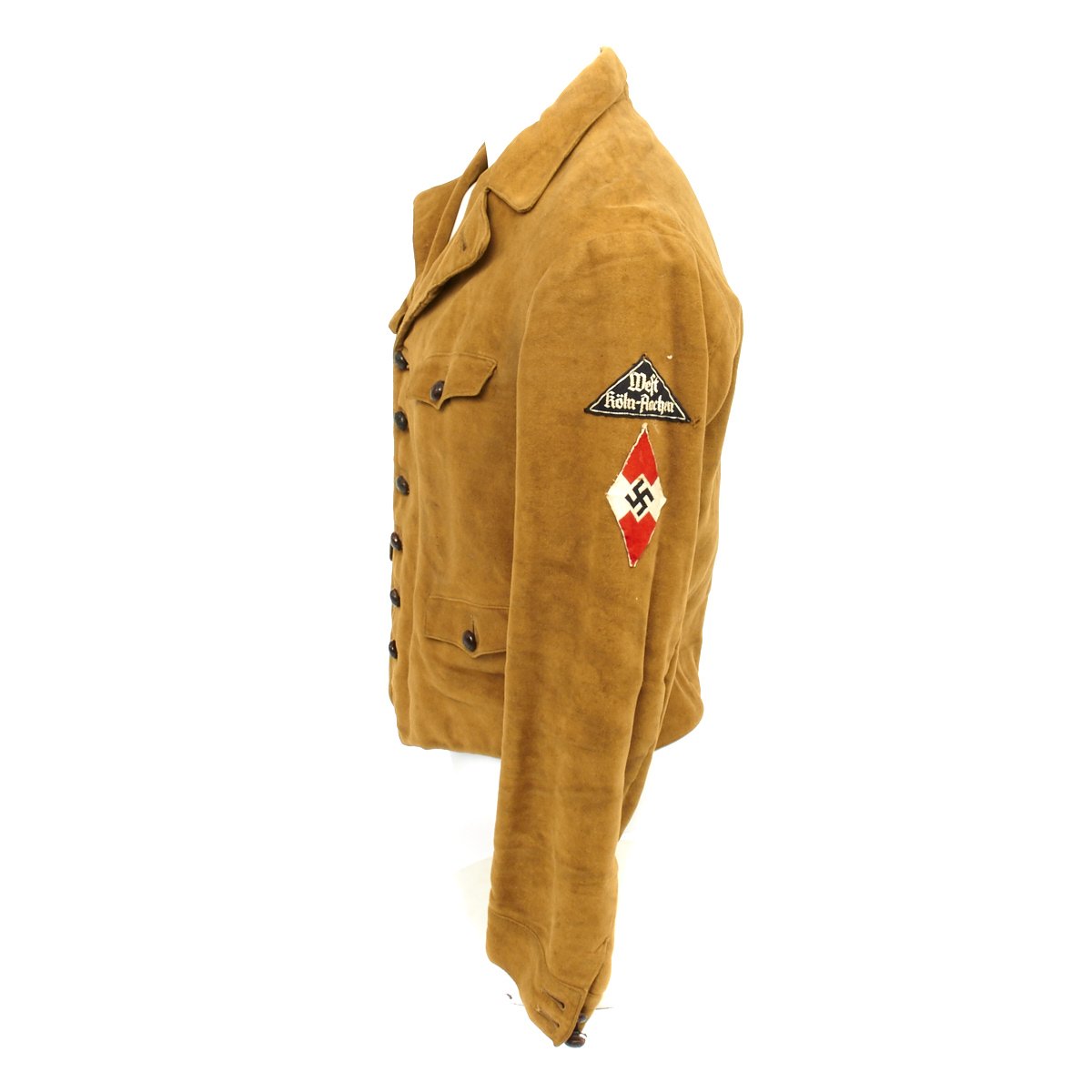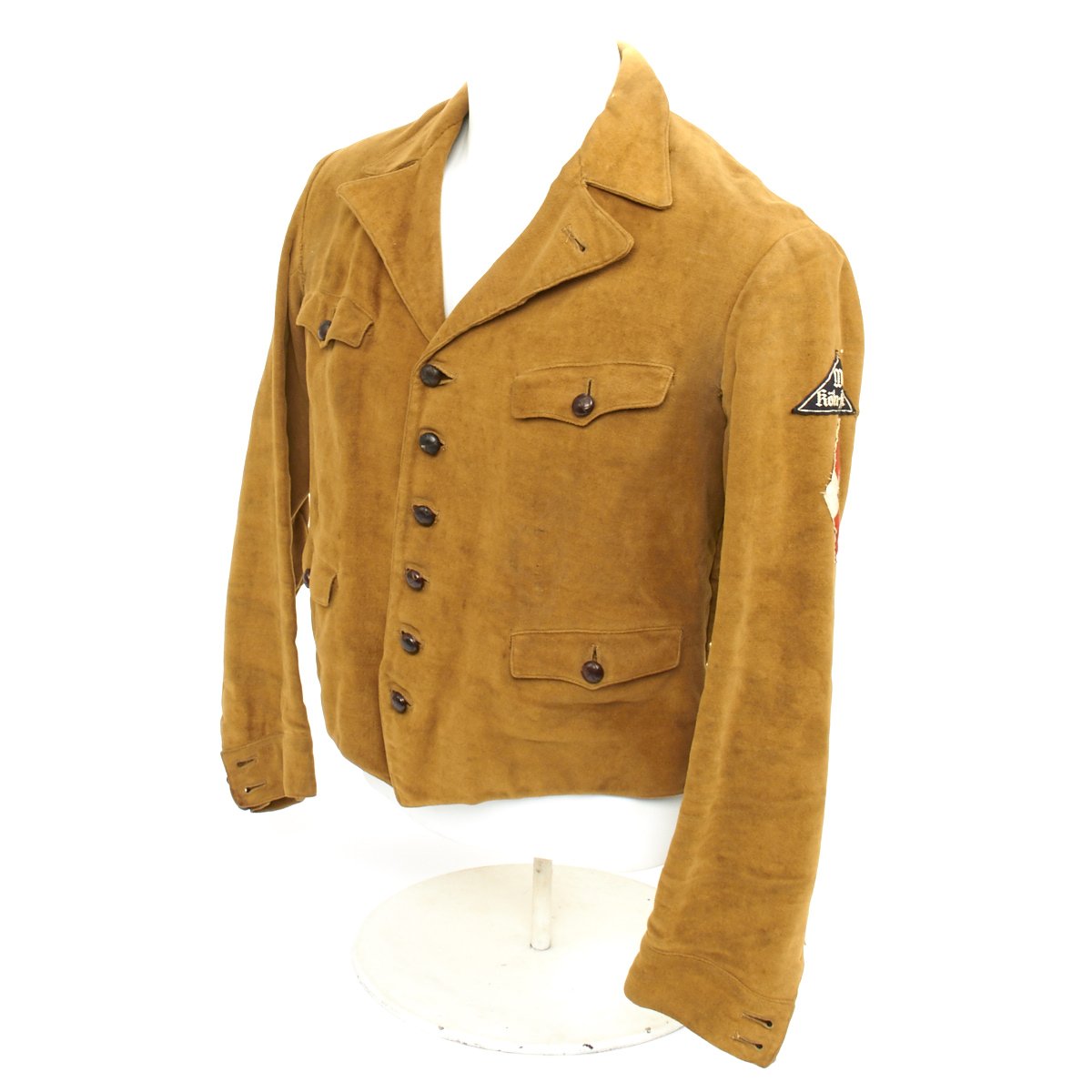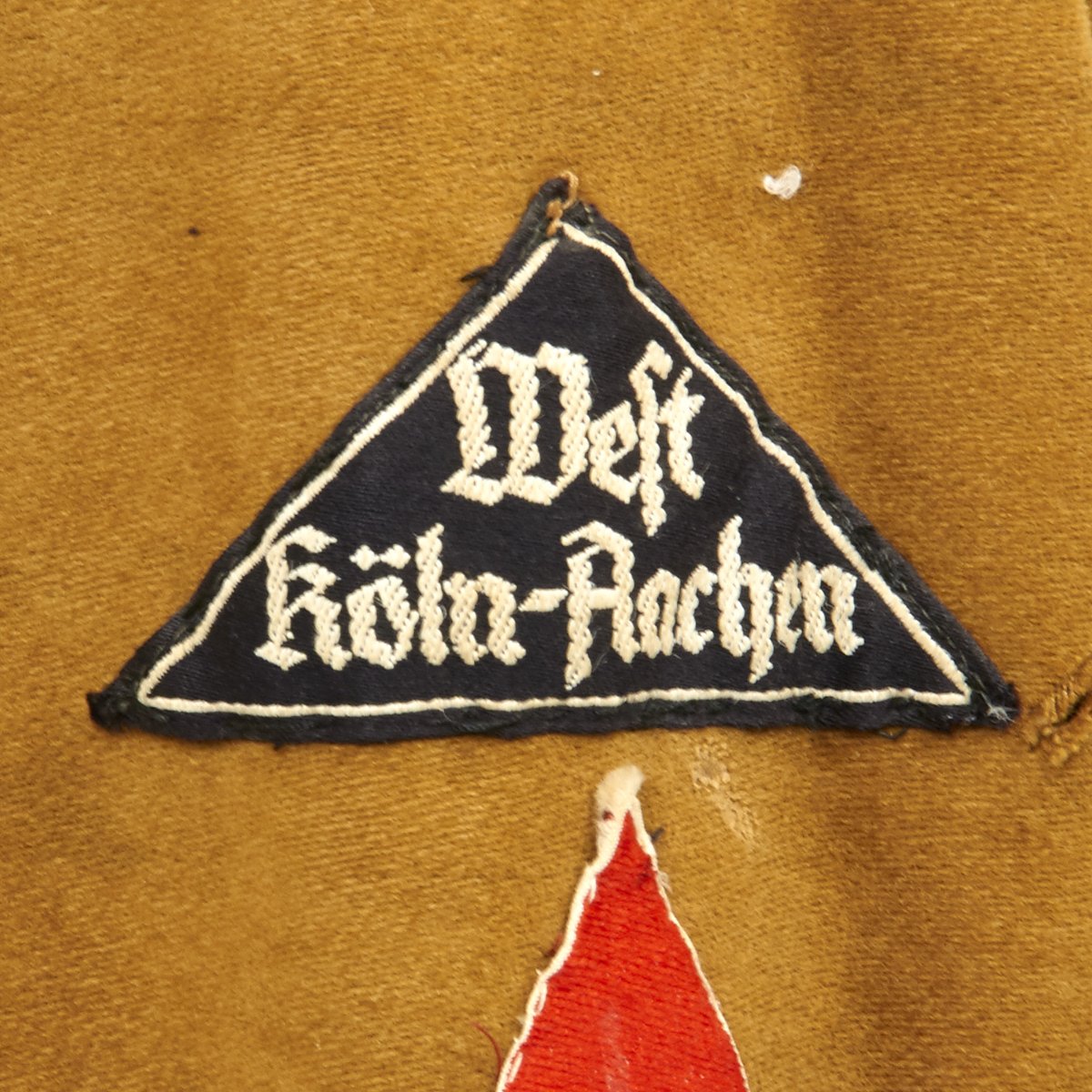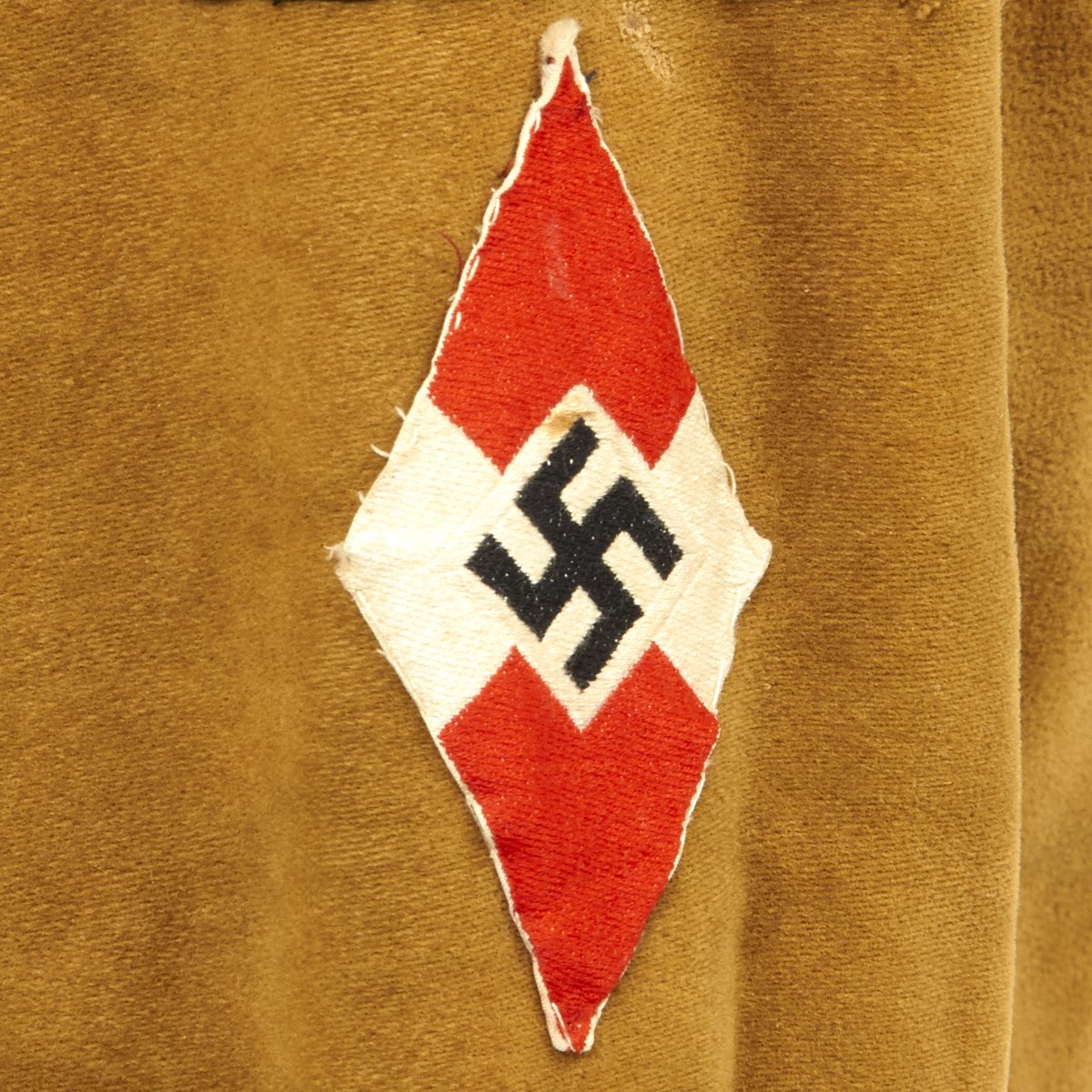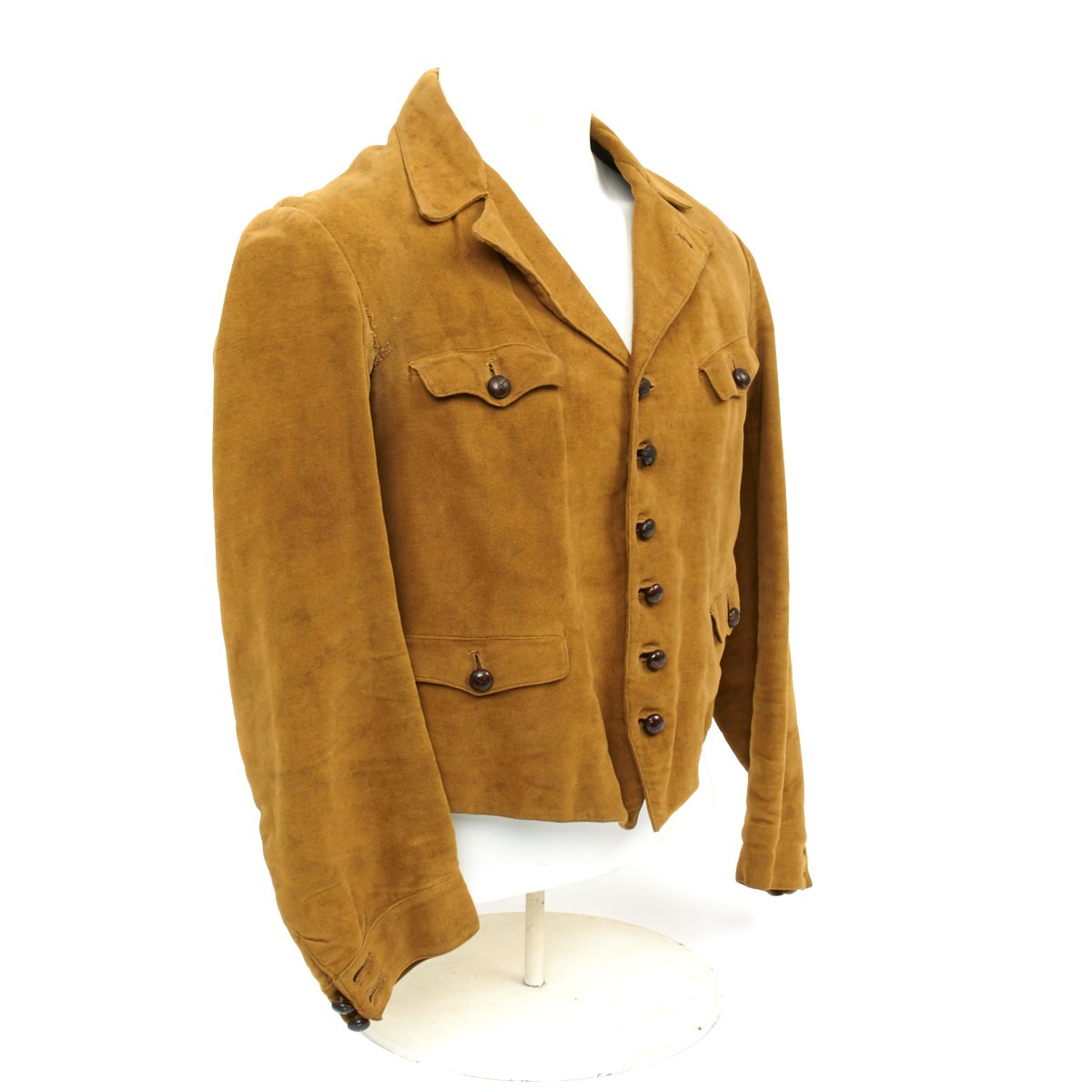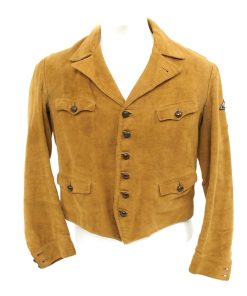Original German WWII League of German Girls Climbing Jacket from Cologne – Aachen Original Items
$ 695,00 $ 208,50
Original Item: Only One Available. This is an excellent rare example of a genuine League of German Girls Kletterjacke, or climbing jacket complete with a West Köln-Aachen sleeve patch.
Just like the boys and young men of the male HJ, the girls and young women of the Jungmaedel and the League of German Girls also had service uniforms that they wore to all official BDM function. The basic uniform, which we will consider the “summer” uniform for the purposes of this website, consisted of a dark blue skirt, a white blouse, and a black neckerchief that was held together with a leather slide. Please check the “summer uniform” page for more information about that basic uniform. This “winter uniform” section mainly deals with the additional uniform items that were worn in colder temperatures such as jackets, overcoats, hats, and, of course, the ski uniform.
The service uniform was to be worn to any functions the League of German Girls participated in, such as parades and events, but also to all meetings of the League, as well as on trips and outings. Wearing your uniform outside of special occasions was originally not allowed, but it soon became commonplace for members of the BDM to wear their uniforms to school. Some teachers who were party members often preferred girls who were active in the BDM over their other students and gave them better grades, while they admonished girls who weren’t members or were not very active in their service.
Because parents had to purchase the uniform for their daughters, it was not uncommon that a girl joined, but her parents either refused to or could not afford to buy her the complete uniform. Especially the climbing jacket was not always well-received by parents and many former members recounted that they never owned one and wore a trachten sweater or their regular “civilian” jackets instead.
In many instances where parents could not afford to purchase the uniform, they were home-made from approved patterns sold at clothing stores in the towns, such as ABC Schnitt or Lutterloh. Or else they were substituted by using clothing that “looked right”, such as a regular white blouse and blue skirt. This was especially common among younger members in the Jungmaedel because it was expensive to buy new uniforms each time a girl grew out of them. If a family had several daughters, uniforms were often handed down to younger siblings. This accounts for a lot of variations in styles, colors, and fit among the BDM uniforms that we see in photos and especially on the collector’s market.
The so-called Kletterjacke, or climbing jacket, is probably the single most recognized uniform piece of the League of German Girls. It was designed to be worn with the BDM uniform on colder days of the year such as spring, and fall, and in many instances it was also worn during deep winter or with civilian clothing if the girl didn’t own another warm jacket that she could wear to school or to go out on cooler days.
The climbing jacket was a very stylish waist-length jacket that was cut a bit shorter in the back than the front to create a slimming silhouette for the wearer, similar to the cut of the military uniforms of that time period. It was made from fawn color suedette, or faux velour, fabric, and was generally lined with a lighter brown rayon or cotton fabric on the inside. Variations in color and materials were very common between the different manufacturers and between different bales of material. Variations are especially common in the material of the liner, which range from light tan cotton to rayon to very dark browns, greens, or even purples. Jackets manufactured during wartime were most often made with rayon liners since rayon was domestically produced whereas cotton had to be imported.
The back of the jacket had two small take-up tabs with a small metal buckle, but plenty of variations without this buckle are seen. The front of the jacket had four small patch pockets, and two different types of pockets are commonly seen – plain ones and ones with a center pleat. At first sight, the buttons on the climbing jacket appear to be woven leather (a popular style at the time), but upon closer inspection they are actually molded bakelite buttons with the letters BDM and JM embossed on them. This example appears to actually have woven leather buttons.
The lozenge-shaped HJ insignia as well as the Gau triangle patch were worn on the left sleeve of the jacket. One should note, however, that because patches had to be purchased by the girls or their parents, we frequently see jackets that only have the triangle, only have the HJ patch, or have no insignia on them whatsoever. This was not uncommon and if you, as a collector, find a jacket without insignia, it is possible that it never had them at all. This example bears the West Köln-Aachen sleeve patch.
Because sometimes a girl’s family could not afford to purchase the jacket, or the parents did not approve of it and therefore did not want to purchase it, not all members of the League of German Girls owned them. We also see a number of homemade variations and different variations made by manufacturer – some of those are made of corduroy, others have additional pockets on the inside, or a double row of buttons on the outside. Occasionally, variations with only two pockets on the outside are also seen. This example is the four pocket version with a center row of 6 buttons.
Please note that not all BDM uniform jackets closed the “female” way, to the left, some closed to the right. You can see both styles worn in the extensive photo galleries on this website.
Fast Shipping with Professional Packaging
Thanks to our longstanding association with UPS FedEx DHL, and other major international carriers, we are able to provide a range of shipping options. Our warehouse staff is expertly trained and will wrap your products according to our exact and precise specifications. Prior to shipping, your goods will be thoroughly examined and securely secured. We ship to thousands clients each day across multiple countries. This shows how we're dedicated to be the largest retailer on the internet. Warehouses and distribution centres can be located throughout Europe as well as the USA.
Note: Orders with more than one item will be assigned a processing date depending on the item.
Before shipping before shipping, we'll conduct a thorough inspection of the items you have ordered. Today, the majority of orders will be delivered within 48 hours. The delivery time will be between 3-7 days.
Returns
The stock is dynamic and we cannot completely manage it because multiple stakeholders are involved, including our factory and warehouse. So the actual stock may alter at any time. It's possible that you may not receive your order once the order has been made.
Our policy is valid for a period of 30 days. If you don't receive the product within 30 days, we are not able to issue a refund or an exchange.
You can only return an item if it is unused and in the same state as the day you received it. You must have the item in its original packaging.
Related products
Uncategorized
Uncategorized
Uncategorized
Angolan Rebel 1970s era 60mm Inert Display Mortar from Angolan Civil War Original Items
Uncategorized
Uncategorized
Australian WWII Owen MK1 Machine Carbine SMG Custom Fabricated Replica with Sling Original Items
Uncategorized
Uncategorized
Uncategorized
Uncategorized
Uncategorized
Band of Brothers ORIGINAL GERMAN WWII Le. F.H. 18 10.5cm ARTILLERY PIECE Original Items
Uncategorized
Uncategorized
Uncategorized
Uncategorized
Uncategorized
Uncategorized
Uncategorized
Uncategorized
Uncategorized
